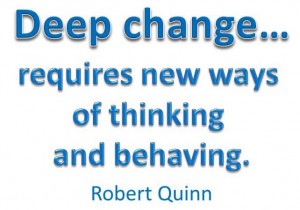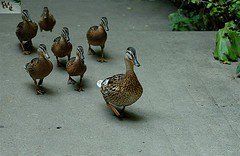Spring is finally emerging here in t he North Country, and the bees are buzzing, birds are singing. Melissa’s post last week about encouraging partnerships with public and other libraries had me thinking about collaboration as a cross pollination of ideas and understandings. When school librarians have a chance to meet and work with others in the field whose overall mission is the same, but different according to parameters of their workplaces, the benefits move both ways.
he North Country, and the bees are buzzing, birds are singing. Melissa’s post last week about encouraging partnerships with public and other libraries had me thinking about collaboration as a cross pollination of ideas and understandings. When school librarians have a chance to meet and work with others in the field whose overall mission is the same, but different according to parameters of their workplaces, the benefits move both ways.
Earlier in the year, I was invited to present at the New England Association of Independent School Librarians at their annual meeting on April 12, 2013. While I was excited to take on the task, I realized that I really had limited first-hand knowledge of independent schools, and I was eager to learn more. My background includes many years in the public school system and in a public university, so I did a bit of digging to understand my audience. What I found is that there is a range of independent schools for students of all ages, from those that are focused on college prep, to those that provide a niche environment for learning depending on the interests and abilities of the student. While independent schools are governed by a board of trustees, some are combinations of private/public schools, some are based on religious or organizational affiliation, and many are funded exclusively by tuition, donors, and endowments. They include day schools and boarding schools and are not for profit, and are not encumbered or constrained by public school regulations.
Libraries are an important part of the school experience in independent schools, and are often extolled as indicators of the quality of the school. The National Association of Independent Schools has established Guidelines of Professional Practice for Librarians, and there are many regional independent school library organizations. There is a separate section within the American Association for School Librarians (AASL) for Independent Schools (ISS), and therefore, independent school librarians have access to professional networks that meet their particular concerns, which are not so different than those of public school librarians.
The April NEAISL meeting was held at Burr and Burton Academy in Manchester, Vermont, and attendees came from across New England and upper New York State, in spite of the snow, sleet and freezing rain that is typical of early spring in Vermont. Susan Ballard, AASL President, was the keynote speaker who suggested ways to advocate for school libraries through marketing or branding, a topic that resonates with all school librarians. Throughout the day, in formal sessions and informal discussion, I listened for the common themes that connected independent school librarians. Enthusiastic about their work and their schools, they voiced familiar concerns about:
- Effective technology integration
- Engaging digital native students in learning
- Advocacy
- Changing space needs for libraries-learning commons
- Diversity or lack of diversity in student populations
- Collaboration with other faculty
- Students with special needs or ELL
- AP courses-yes or no
- College research ready
While I did not hear very much about Common Core Standards, I must admit, it was a relief not to have that on the table. As I listened and learned from independent school librarians, I realized more than ever, that dedication to library service for students and staff is the common denominator for all of us in the profession. No matter where we work, in urban or rural areas, in large or small public or independent schools, we are all committed to our mission, and we have a lot to share. I want to thank Merlyn Miller, Library Director at Burr and Burton for the opportunity to share, listen, and learn with such a diverse group of professional school librarians.
In order to take advantage of cross pollination of understandings, I urge you to seek out your fellow school librarians to compare notes and ideas. If you are in a public school, plan to visit a local independent school. If you are in an independent school, locate a nearby public school. There is a lot to learn from different perspectives, and enjoy your visit!
References:
American Association of School Librarians Independent Schools Section. Online. http://www.ala.org/aasl/aboutaasl/aaslcommunity/aaslsections/iss/iss .
Conference program for New England Association of Independent School Librarians. Online. https://sites.google.com/a/burrburton.org/new-england-association-of-independent-school-librarians-conference-2013/conference-program.
Guidelines of professional practice for school librarians. National Association of Independent Schools. Online. http://www.nais.org/Series/Pages/NAIS-Guidelines-of-Professional-Practice-for-Librarians.aspx. .
Hand, D. Independent school libraries: Perspectives on excellence. (2010). Santa Barbara, CA: Libraries Unlimited.
National Association of Independent Schools. Online. http://www.nais.org/Articles/Pages/About-NAIS.aspx?src=utility.
 Today, I am facilitating a half-day preconference workshop titled: “Coteaching Inquiry Learning and Reading Comprehension Strategies: A Perfect Match.” I am a long-time practitioner and staunch advocate for the school librarian’s instructional partner role.
Today, I am facilitating a half-day preconference workshop titled: “Coteaching Inquiry Learning and Reading Comprehension Strategies: A Perfect Match.” I am a long-time practitioner and staunch advocate for the school librarian’s instructional partner role.







